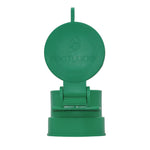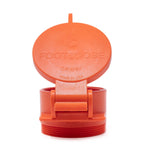You have no items in your shopping cart.
Wells have been known to mankind for thousands of years, providing their owners with a steady stream of fresh water that can be used for drinking, cooking, and washing. Wherever an aquifer is present, a well can be constructed by drilling into it using a variety of methods.
Although well systems usually require little maintenance after installation, they should still be monitored to prevent problems like water contamination and low water pressure, which can lead to more troubling issues later on. To help you in deciding on the tools and products that will fit your specific needs, we have compiled an essential guide to well monitoring and equipment.
Why Monitor Groundwater Quality?
While municipal tap water is subject to several chemical treatments before it reaches a faucet, well water is taken straight from the source without any prior procedures. This means that well water is pure, additive-free water that contains many of the beneficial minerals like calcium and magnesium that are lost in municipal water treatment.
At the same time, since well water is not chemically treated to filter out any harmful substances, it could easily become susceptible to contamination from bacteria and microorganisms. This is where it becomes important to monitor the quality of your groundwater to ensure you are getting water that is clean and safe to drink.
A monitoring well also helps to observe the water levels in your home and ensure that your household is receiving the right amount of water required for household use. Furthermore, monitoring your groundwater quality regularly helps to prevent the frequency of repairs, as it allows you to catch potential issues early on.

What Types of Groundwater Wells Are There?
There are three types of private wells that use a groundwater system. Each type has a different function and purpose that optimizes the experience for the individual homeowner. The following types of wells vary according to their simplicity, costs, and depth:
Dug The oldest and most tried-and-true method for creating a well, dug wells are made by using a shovel or backhoe to dig a hole deep in the ground until the aquifer is reached. As these wells are not cased continuously, they are lined with stones, brick, and other materials to prevent the well from collapsing. They typically have a large diameter and are also fairly shallow, ranging from 10 to 30 feet deep and making them more susceptible to surface water contamination.
Driven Driven wells are approximately 30 to 50 feet deep and are constructed by driving pipes into the ground and passing it through water-bearing sand or gravel. Any hole deeper than 50 feet typically requires a registered well driller. Although these wells are cased continuously, they are highly susceptible to contamination, as the water is drawn from aquifers near the surface, making it easier for bacteria and other contaminants to enter the water.
Drilled Drilled wells, otherwise known as bored wells, are created by percussion or rotary-drilling machines and can be up to thousands of feet deep. This depth, along with its continuous casing during installation, allows drilled wells to have a lower risk of contamination. While drilled wells are some of the most secure wells out there, the construction of one can come out to a hefty cost with the use of heavy truck-mounting equipment.
Types of Well Monitoring Equipment
Every well system should have proper well monitoring equipment to aid in closely monitoring the function and efficiency of the well. The following types of equipment can be used to keep your well monitoring system optimal and secure:
Well Plugs
Designed to fit snugly inside the diameter of your pipe, well plugs have watertight seals and come in a variety of styles and sizes to help to secure your well’s water supply from vermin or insects. Placed at the top of monitoring or observation wells, quality well plugs are made tamper-proof and resistant to any potential damage.
- Mechanical Test Plugs – These plugs are made to be highly durable and held tightly during testing processes. Mechanical test plugs are used to seal up the pipes and build up pressure to successfully test the function of the piping system.
- Locking Well Plugs – Reliable and easy to use, locking well plugs are inexpensive, resistant to corrosion, and trusted to be watertight. These plugs can also be sized to seal wells and piping to prevent contaminants from getting through.
- Vapor Monitoring Well Plugs – In situations where vapor monitoring is necessary to detect a leak in a line or tank, these plugs are created to protect your well water from contaminants with self-sealing and watertight features. At the same time, this allows vapor or water to be extracted for sampling without removing the plug.
Well Caps
Useful when trenching both electrical and plumbing, a well cap is the cover on top of the well that sticks out of the ground. It serves a similar function to well plugs in that it protects your well water from insects and pollutants. However, the key difference between the two is that a well cap fits over the top of the piping, while a well plug is placed inside of the piping.
Commonly made of thermoplastic materials, well caps are engineered to provide your well with maximum security in the harshest of environments. Similar to vapor monitoring well plugs, many have features like ventilation systems that allow vapors to escape from the pipe without the removal of the cap.
Well Protectors
Similar to well caps, well protectors serve the purpose of keeping your well water safe from contamination by insects, pests, rainwater, and chemical runoff. Well protectors manufactured with high-quality materials are able to withstand harsh conditions. For instance, aluminum, watertight caps with powder coating allows well protectors to resist corrosion from rainwater exposure. A quality well protector will also be built with optimized height to clear even the tallest of well plugs and specialized hinge pins to prevent vandalism and unauthorized access.
Monitoring Well Manholes
Obtaining samples and safely monitoring your well comes easy when a monitoring well manhole is used. This equipment allows homeowners and professional well contractors to access a sewer line for inspections and maintenance. To save money for home and business owners and reduce the resources necessary for maintenance, these manholes can also accommodate equipment and technology such as cameras and sample collection kits. Marked with an API-approved cast-in identification triangle, quality monitoring well manholes come in a variety of sizes and are easy to install, cost-efficient, and highly durable to uphold all of your maintenance needs.
Frequently Asked Questions
What happens if my well water becomes contaminated?
If your well water becomes contaminated, you must take action as soon as possible to prevent any further damage to health or property. Do not consume any water from the well until it has been inspected by a professional well water contractor.
Water contaminated by high nitrate levels can result in severe health concerns, such as a condition called methemoglobinemia, in which red blood cells have trouble carrying and distributing oxygen to the body. If you or someone else has ingested contaminated water, seek medical attention immediately.
How often does my well water need a check-up?
You should sample well water at least once a year to ensure water levels are functioning normally and the water is void of any harmful substances. Take the samples to the laboratory as soon as possible or keep them on ice until the lab receives them.
How do I collect a sample?
To collect a sample from your private well, you must first contact an ELAP-certified laboratory, from which you can obtain sample bottles and a chain of custody. This can cost around $50. The lab may also provide you with some sample procedures and hold times for testing for bacteria, runoff chemicals, and other harmful substances. Any procedures that the laboratory provides you should be followed accordingly to obtain sufficient and legitimate data.
Is Your Well Water Safe?
For owners of private wells, it is crucial to install and maintain an efficient well monitoring system to ensure the water remains safe to use. Using proper well monitoring equipment, homeowners can regularly inspect their well water and keep it functioning properly for years to come.
As a homeowner, your well water is valuable to you and your family, and the idea of something going wrong can be worrisome. At Enviro Design Products, we aim to ease those fears by providing you with industry-leading well-monitoring equipment of only the finest quality. Visit our shop today to browse through a large assortment of products and equipment that can help ensure your well water remains safe and clean.










